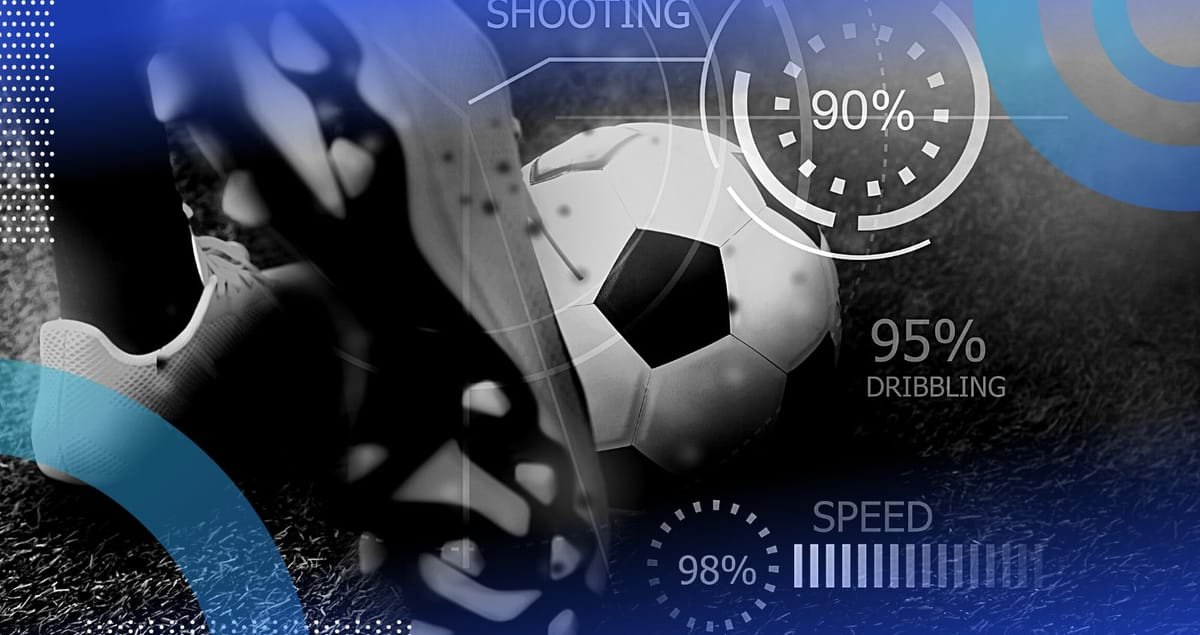The rapidly developing field of computer vision has a number of sports-related uses. Our expert explains some of the most interesting ones.
Computer vision is finding increasing applications in sports, revolutionizing how games are played, analyzed, judged, and viewed. Although humans are exceptionally good at assessing what’s happening during a sporting event, computer vision systems can analyze a hundred times more data in real time than any human can. Sophisticated convolutional neural networks, working in tandem with high-resolution cameras, allow custom computer vision solutions to reliably distinguish between balls, players, the ground, fans, strike zones, and any other object on the field, transforming raw visuals into a whole lot of actionable insights.
In this article, we will explore the most potent applications of computer vision in sports, supported by real-life examples.
Computer vision is the basis of the Hawk-Eye systems most commonly used in tennis and football to track the ball’s trajectory. The system typically employs between six and 10 high-speed cameras installed around the playing space. These cameras continuously capture images at high frame rates, which an ML-based computer vision algorithm to distinguish the ball from the rest of the environment. Afterward, the system transforms the data into a 3D animation of the ball’s trajectory.
In tennis, for example, the Hawk-Eye system frequently resolves questionable umpire calls. The system’s high depth allows referees to check whether the ball is in or out of bounds with accuracy down to centimeters.
Similar to the way data can help businesses make more informed decisions, computer vision can provide athletes with deeper insights into their performances. For example, Sports Computing, a Norwegian sports analytics startup, has created a mobile app that can assist athletes of all levels, primarily soccer players, in improving their training. Using a proprietary computer vision model, the app analyzes a player’s biomechanics and movement and provides personalized feedback. The solution then generates detailed breakdowns of specific moves based on its analysis of techniques of the world’s best athletes.
Athlete tracking is one of the most widespread and versatile applications of computer vision in sports. Analyzing athletes’ movement during the competition allows coaches to get deeper insights into player performance and behavior, regardless of the sport.
SportVU 2.0 is an optical tracking technology based on computer vision that can track football match data for coaches and analysts. Using 4K cameras and advanced ML algorithms, the system can capture detailed movement of both the ball and the players. Besides improving performance, football teams can use computer vision technology to prevent injuries. The system can accurately highlight deviations in player performance, allowing coaches to detect injury risks.
Along similar lines in professional sports especially, athletes ride a fine line between pushing their capabilities to the limits and risking their health. In conjunction with advanced, IoT-enabled wearables, computer vision allows teams to monitor performance and detect signs of injury as early as possible. The NFL partnered with Amazon Web Services to analyze the frequency and duration of player contact during games using computer vision to predict and prevent player injuries. Instead of developing the system themselves, the two companies launched what they called the NFL Data Challenge, attracting almost a thousand data science teams. These teams competed to develop the most accurate machine learning algorithm for identifying on-field contact. As a result, a Korea-based data scientist managed to create an algorithm that improved the ability to detect contact by 31 percent compared to existing solutions.
Fan engagement keeps the sports industry alive. Sports and technology companies are developing new ways to engage fans, attract broader audiences, and increase entertainment value. Live sports broadcasts already use computer vision to overlay dynamic content like athlete performance insights on the screen.
With exponentially growing advancements in computer vision algorithms, every object in the live stream can become a digital asset, which opens up a myriad of ways to enhance the viewers’ experience. For example, ESPN and Pixar Animation Studios recently launched Funday Football, an alternative way to watch NFL broadcasts. Using sophisticated computer vision models and high-resolution cameras, the live broadcast of the Atlanta Falcons versus Jacksonville Jaguars game became a cartoon-like, real-time animation of Buzz Lightyear, Woody, and some of Andy’s other toys playing an American football game.
For any professional sports team, players are the most important asset. Given that player transfer costs can go beyond millions of dollars, managers are often on the lookout for tools that can support their player recruitment decisions. In this context, advanced computer vision applications can provide accurate insights into a specific player’s value.
For example, STATS, a U.S.-based sports technology company created a sports analytics platform that tracks players’ movements, shots, passess, and other metrics and then transforms this data into detailed player profiles. For example, the NBA’s Orlando Magic used STATS’ technology to recruit a new guard, who eventually helped the team take significant strides forward in the league.
With the help of recent advancements in image processing, segmentation techniques, and AI as a whole, computer vision systems have become more accurate and reliable. This opens up more opportunities for the sports industry to leverage computer vision to prevent injuries, increase fan engagement, get a deeper insight into athlete performance, streamline the resolution of challenging on-field situations, and help referees make more fair decisions.
